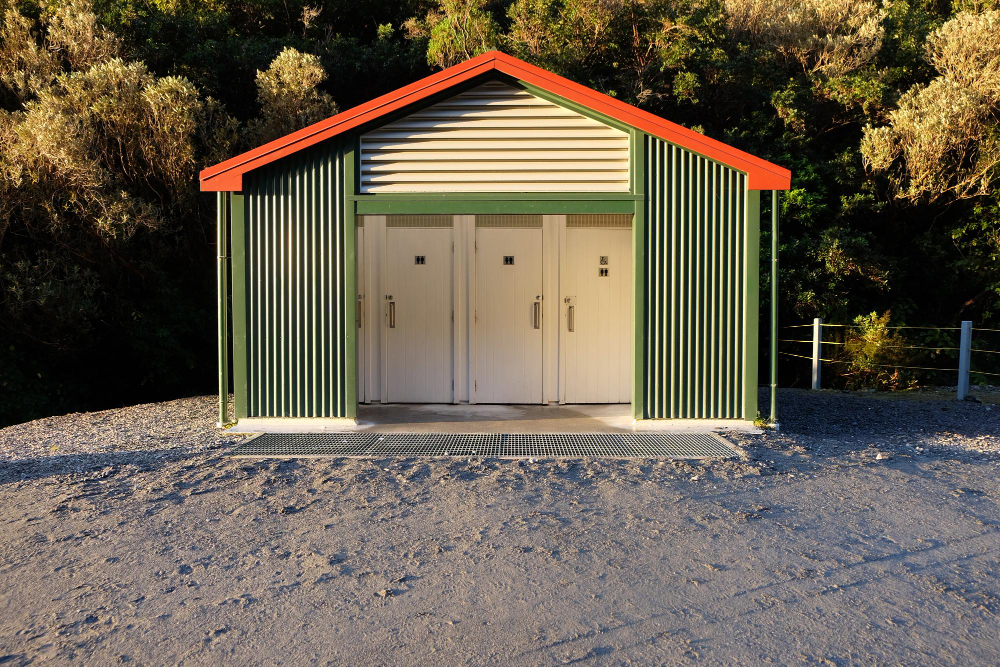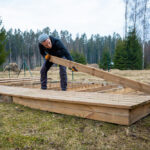I often come across questions about outdoor storage sheds because they’re such a practical solution for keeping yards organized. Whether it’s for storing garden tools, bikes, or even creating a small workshop, a shed can really help. The big question everyone asks is: Is it cheaper to buy a pre-built one or have one built? As someone who just gathers info and doesn’t build anything myself, I’ve dug into this topic to share what I’ve found. It’s not a simple yes or no answer—it depends on budget, skills, and time. In this detailed article, I’ll break it all down with easy-to-understand insights, practical tips, and some examples I’ve come across. Let’s dive in!
What is an Outdoor Storage Shed?
Let’s start with the basics. An outdoor storage shed is a small structure in your backyard designed to protect your belongings from weather like rain, sun, and snow. I think of it as an extra storage space outside. Sizes range from tiny 4×6 feet units that fit snugly against a fence to larger 20×20 feet ones that could almost be a garage.
Sheds aren’t just for storage—some people turn them into home offices, gyms, or play areas for kids. I’ve read about someone using a small shed as a potting station, which sounded like a smart idea. Materials vary too: wood for a classic look, metal for strength, and plastic or resin for low maintenance.
On top of that, sheds can increase your home’s value. Research suggests organized outdoor spaces attract buyers, possibly adding a few thousand dollars to your property. Just be sure to check local regulations—some areas require permits for sheds over 100 square feet.
Types of Outdoor Storage Sheds
Before deciding, it’s good to know the main types. I’ve gathered details on each with their pros and cons.
Wooden Sheds
Wooden sheds stand out for their natural, garden-friendly appearance. Made from cedar, pine, or pressure-treated lumber, they offer good insulation and can be painted any color. Costs start around $3,000 for a basic 10×10, climbing to $10,000 for larger ones. They’re sturdy but need staining every few years to avoid rot.
Pros: Customizable, eco-friendly with sustainable wood, great for heavy items.
Cons: Susceptible to pests, higher maintenance, can warp in wet areas.
Metal Sheds
Metal sheds, usually galvanized steel or aluminum, are tough and fire-resistant—perfect for securing valuable tools. Prices range from $2,000 to $6,000, with $25-$30 per square foot. I’ve read they assemble quickly, though they can heat up in summer.
Pros: Weather-durable, low upkeep, budget-friendly.
Cons: Prone to dents, noisy in rain, poor insulation.
Plastic or Resin Sheds
These are lightweight and rust-proof, ideal for beginners. Made from high-density polyethylene, they snap together easily. Average cost is $1,000 to $4,000 depending on size. I’ve seen them do well in mild weather, but they struggle with heavy snow.
Pros: Simple setup, no painting required, insect-resistant.
Cons: Fades in sunlight, less robust for large storage.
The type you choose impacts both buying and building costs, so consider your climate and needs.
Costs of Buying a Pre-Built Shed
Buying a shed means getting a ready-made kit or fully assembled unit—great if you’re not into DIY. Based on recent data, the average cost is $2,723 to $3,805, including installation. Small ones (under 100 sq ft) start at $817, while custom high-end models reach $12,953.
For a 10×12 prefab kit, expect $3,000-$5,000, plus $50-$100 per hour for professional setup. Metal options run $2,000-$6,000, wood $3,000-$10,000. Add-ons like foundations ($1-$2 per sq ft for gravel) or permits ($100-$1,000) can increase the total.
I’ve read about someone who bought a metal shed and had it up in a day—super convenient.
Pros of Buying a Shed
It saves time, with assembly taking just 1-2 days compared to weeks for building. They often come with 10-20 year warranties, and factory quality is reliable. Many include extras like vents and shelves.
Cons of Buying a Shed
You pay more for the convenience—sometimes 20-30% above DIY costs. Customization is limited, and cheaper kits can feel flimsy.
If you’re shopping, Amazon has solid options. The Rubbermaid Resin Storage Shed is a hit under $1,089—it’s weather-resistant with double doors. Check it out here.
Costs of Building a Shed
Building a shed can cut costs but takes effort. For DIY, materials for a 12×12 shed average $2,600-$3,500. Per square foot, it’s $17-$40 for wood framing. A 20×20 could cost $4,000-$12,000 in materials alone.
Hiring pros ranges from $2,500-$6,000 for a basic shed, up to $12,000+ for a workshop. Tools like a drill ($50) or saw ($100), plus lumber ($500+), shingles ($200), and concrete ($75/cubic yard) add up. Time: 20-50 hours for a simple build, more for complex ones.
Step-by-Step DIY Guide
Here’s a basic outline I’ve found from others:
- Plan: Sketch size, get permits.
- Foundation: Level ground, use concrete or blocks ($200-$500).
- Frame: Build walls with 2x4s ($300).
- Roof: Add rafters and shingles ($400).
- Siding/Doors: Install panels and hardware ($500+).
- Finish: Paint, add shelves.
I’ve heard from someone who saved $1,000 building their own.
Pros of Building a Shed
Savings: Often 20-50% less than buying. Full customization—add windows or lofts. It’s rewarding to create something yourself.
Cons of Building a Shed
It’s time-consuming; mistakes add costs. Weather delays are common, and lack of skill might affect durability.
Direct Comparison: Which is Cheaper?
Comparing the two, DIY building usually wins on price. For a 10×12: Pre-built $3,000-$5,000 vs. DIY $2,000-$3,000. Hiring builders bumps it to $5,900-$13,300.
Here’s a detailed table:
| Aspect | Buying Pre-Built | Building DIY | Hiring to Build |
|---|---|---|---|
| Average Cost (10×10) | $2,723-$3,805 | $1,500-$3,000 | $2,500-$6,000 |
| Time Required | 1-2 days | 20-50 hours | 1-2 weeks |
| Customization Level | Low | High | Medium-High |
| Maintenance | Low-Medium | Medium | Medium |
| Durability | Factory-tested | Skill-dependent | Professional |
| Warranty | Yes (10-20 yrs) | No | Possible |
Buying is faster, while building offers cost savings and personalization.
Factors to Consider Before Deciding
Cost isn’t the only factor. Size: 10×10 $300-$3,000, 14×24 $2,500-$4,000. Location: Sloped yards need grading ($1,000+). Skills matter—if you’re not handy, buying might be better.
Climate Considerations
In snowy regions, metal or reinforced wood works best. Hot areas benefit from insulated sheds.
Budget Breakdown
Factor in extras: Electricity ($50-$100/hr), lighting ($188-$325).
Long-Term Value
Sheds last 10-30 years. Quality materials prevent early replacements.
Maintenance Tips for Your Shed
Upkeep is essential. For wood: Stain every 2-3 years. Metal: Check for rust annually. Plastic: Clean with soap. I’ve read that adding shelves inside maximizes space.
Environmental Impact
If you care about the planet, sustainable wood is a good choice. Plastic sheds are recyclable but petroleum-based. DIY building cuts shipping emissions.
Real-Life Case Studies
I came across a story of someone who bought a $1,200 plastic shed—easy to set up but cracked in wind. Another built a wooden one for $2,000, loving the custom loft but taking two weekends.
My Recommendation
As someone who just researches, I’d suggest building DIY if you have time to save money. If you’re short on time, buying is easier. The U-MAX Outdoor Metal Storage Shed on Amazon is durable and great for small sizes—check the current price and details here.
For resin, the Keter Manor is popular—compact and sturdy. See the latest price and specs on Amazon: https://www.amazon.com/Keter-Manor-Resin-Storage-Shed/dp/B00J2Q5Q5Q.
Conclusion
Building DIY is often cheaper, saving hundreds over buying. But buying offers convenience. Weigh your needs—a shed is a smart investment. Hope this detailed info helps you out!





